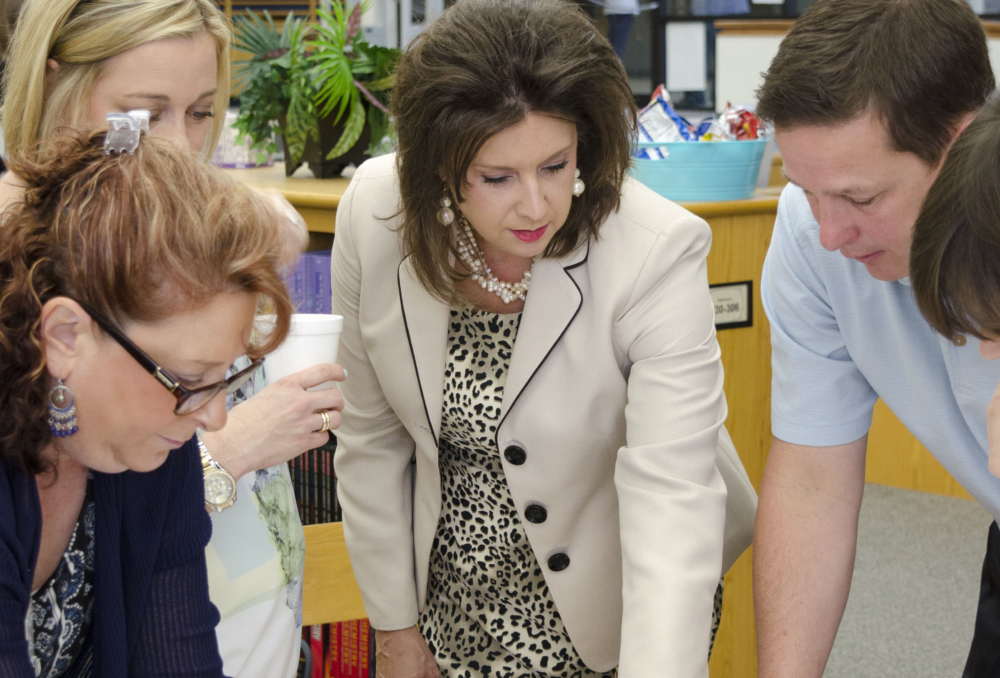
The Visioning Document: Is It Still Leading Our Thinking?
In 2006, a group of 35 visionary school superintendents gathered to start thinking about the future of Texas education. They were progressive, but frustrated, and believed their current systems could be improved. They were challenged with letting go of the status quo, and truly focusing on what could be, not what was. They represented a cross section of Texas, and agreed to debate in order to try to solve issues. What resulted was much more than that, as they created an ideal new vision for public education.They visited leading companies across the United States, listened to industry leaders, and applied needs to the challenges of educating our public in order to perpetuate our democracy. The result of their work was a document formally titled Creating a New Vision for Public Education in Texas: A Work in Progress for Conversation and Further Development. Commonly referred to as "The Visioning Document," it represents 21 months of work. The process and experiences designed for the superintendents were facilitated by both TASA and the Schlechty Center, with financial support from (then) SHW Group. Of the 35 who authored the document, less than a handful remain in the role of Superintendent of Schools today. However, their work was forethoughtful and continues to lead and/or support many educational discussions today. Importantly, it also serves as a core piece of curriculum for new superintendents in the First Time Superintendents Academy sponsored by TASA, as well as other organizations.
The document was published in May 2008 by TASA. The authors of these Articles for the future of public education in Texas are commonly referred to as the 'founding fathers' much like the visionaries who drafted our Declaration of Independence. The result was profound in that they put in writing what is often discussed in small circles, but needed to be expressed collectively, and with formality. Some of their ideas received attention and have begun to gain some traction. We see this in student choice associated with HB 5 endorsement areas, and with the recent multi-district lawsuit regarding funding (albeit denied). Like all visionaries, not everything stated in the document was met with popularity. However, their collective wisdom reached consensus and represented over 1.2 million Texas students at the time.
While this document was being written, I served as the district academic leader, reporting to one of the founding fathers, in a large suburban school district in Houston. Conversation always ensued about what he was thinking, and how we were to make it reality. He probed and tested the theories that were emerging from the group. We debated 'What if_' and 'Why is that_' on a daily basis, especially as he prepared for what he called the next 'visioning session' and upon his return. I watched him smile with affirmation about the progress they made, and hang his head with increased frustration that what was discussed would not occur during his tenure as Superintendent of Schools. As he would say, the 'world is not ready for what students need' in education. We had much discourse over the topics that resulted in each of the Articles, while he charged me with ensuring that we kept our focus on what was truly best in education, and to be true to our beliefs, because there would always be critics.
He made me think, question, and problem-solve. He made me design what did not exist, and demanded that we do it the right way, not just the way others had done it before us. We were transforming while living in the wilderness, searching for Egypt. It was truly a journey.
So, why in 2017 do I ask you to think about something published in 2008? Scholars know that current work should drive the next generation of research questions; however, the vision conceived by these founding fathers has not yet been fully realized while we continue to debate many aspects of the current educational system. I ask you to read the document in full to determine what should be, compared to what is.
I find comfort in The Visioning Document when I work to ensure educational pedagogy is alive and well in our designs. Working with our clients, I first want to safeguard that we, as a firm, are clear on what goals each has as they relate to educational priorities. I pull out my worn copy and make connections to the Articles before proceeding with the design team by first asking myself questions about the connections or disconnections prior to making suggestions as they impact design. I reflect on my many conversations that led me to understand the powerful content, and apply them as I work collaboratively with a design team. The work of the founding fathers never leaves my mind.
I left the annual TASA MidWinter Conference feeling inspired, although much was touted about the issues the legislature will address. I heard a variety of speakers referencing The Visioning Document. They understand; they 'get it.' They are a younger generation of leaders working to achieve the intentions of those who made a statement through their beliefs. I also had a profound conversation with a colleague who is working on a team to keep the spirit of the founding fathers alive by creating an interactive tool to achieve the very things The Visioning Document beckons. I am appreciative of Mission: School Transformation, where the work of these educators is based on The Visioning Document. I thank TASA for keeping the work alive. I still have hope_and hope is a good thing.